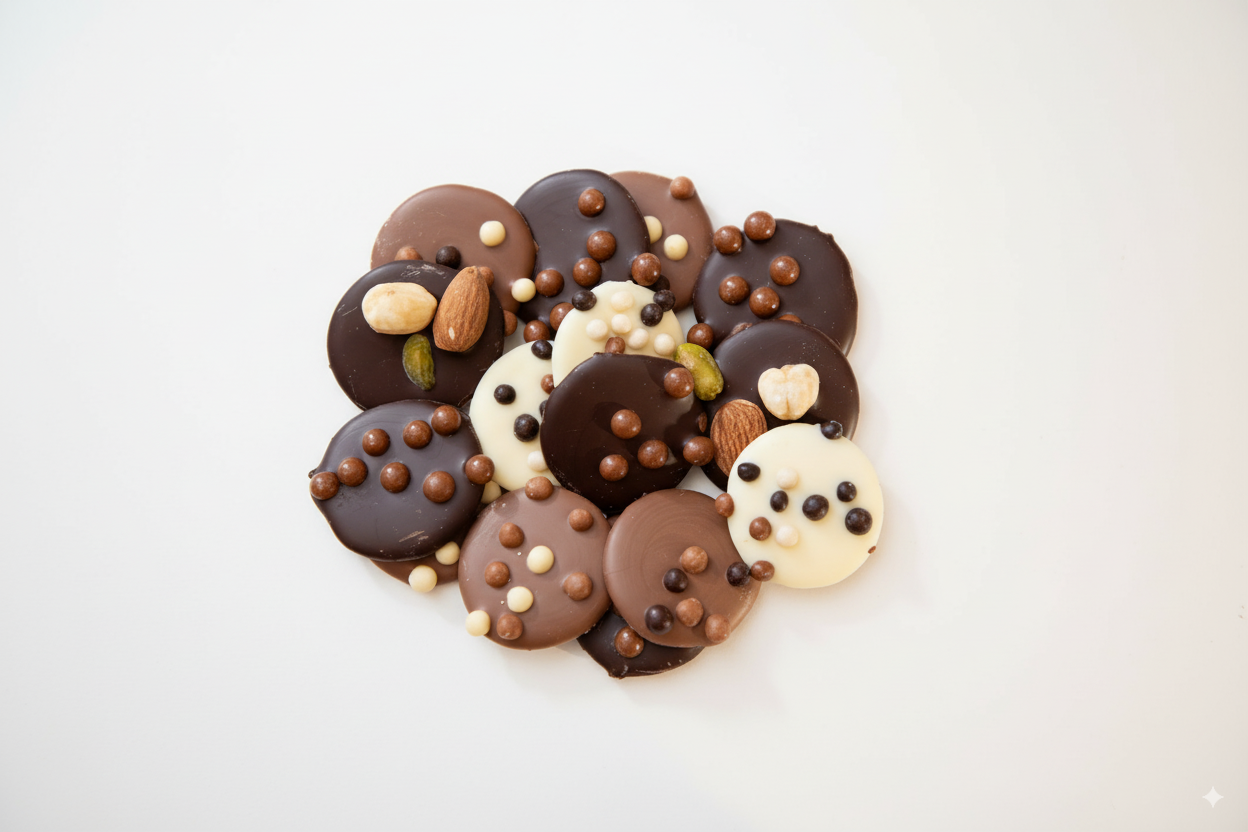Chocolate beggars
Share

Chocolate mendiants are French confectionery made of chocolate discs garnished with dried fruits and nuts. Beggars take their name from the mendicant orders (Dominicans, Franciscans, Carmelites and Augustinians), whose robes inspired the colors of the dried fruits used. Traditional fruits included are figs, almonds, raisins and hazelnuts.
Chocolate was introduced to France at the beginning of the 17th century, brought by the Spanish. Initially consumed as a drink, it was quickly integrated into French confectionery. Under Louis XIV, chocolate became very popular at the court of Versailles. The king himself was a lover of chocolate, which was considered a luxury product and a status symbol.
The court of Louis XIV was a center of culinary innovation. Court chefs experimented with chocolate, incorporating refined ingredients such as dried fruits and nuts, giving rise to sophisticated confections like beggars.
Trade with the colonies ensured a regular supply of cocoa, dried fruits and nuts, favoring these new confectioneries.
Mendiants are popular for the combination of the sweetness of chocolate with the crunch of nuts and the richness of dried fruits, providing a varied taste experience.
Chocolate beggars, with their refined development during the reign of Louis XIV and their integration into French culinary traditions, are a perfect example of the French art of living.
The mendiants are made in Sablé-Sur-Sarthe by artisan chocolatiers who use pure cocoa butter chocolate. The assortment of three chocolates, white, milk and dark, sprinkled with crispy balls coated with chocolate or caramel as well as dried fruits go perfectly with tea or coffee.
